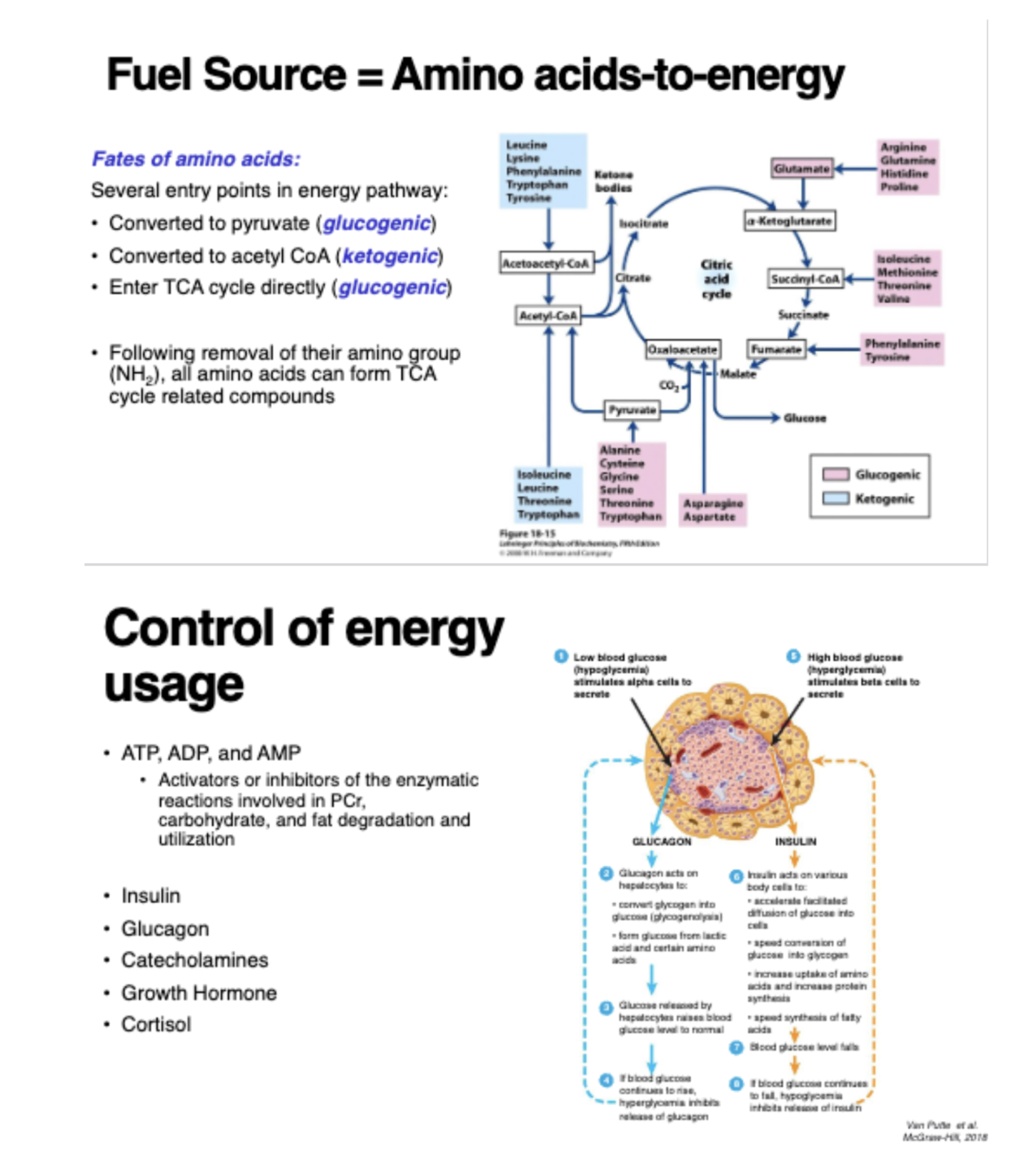What are the fates of amino acids in the energy pathway and how is energy usage controlled?

Understand the Problem
The question involves understanding the metabolic pathways of amino acids in energy production and the hormonal control of energy usage in the body.
Answer
Amino acids are converted to pyruvate or acetyl CoA, regulated by insulin, glucagon, and ATP.
Amino acids can be converted to pyruvate or acetyl CoA for gluconeogenesis or ketogenesis. Energy usage is regulated by hormones like insulin, glucagon, and cortisol, and energy molecules such as ATP.
Answer for screen readers
Amino acids can be converted to pyruvate or acetyl CoA for gluconeogenesis or ketogenesis. Energy usage is regulated by hormones like insulin, glucagon, and cortisol, and energy molecules such as ATP.
More Information
Amino acids metabolize into various pathways allowing flexibility in energy production, via gluconeogenesis for glucose or ketogenesis forming acetyl CoA. Hormones like insulin and glucagon dynamically regulate blood sugar and energy availability.
Tips
A common mistake is confusing glucogenic and ketogenic amino acids. Clarifying which amino acids lead to glucose versus ketone bodies helps prevent this misunderstanding.
Sources
- 18.2: Metabolic Fates of Amino Groups - Biology LibreTexts - bio.libretexts.org
- 12.7: Energy from Amino Acids - Chemistry LibreTexts - chem.libretexts.org
AI-generated content may contain errors. Please verify critical information